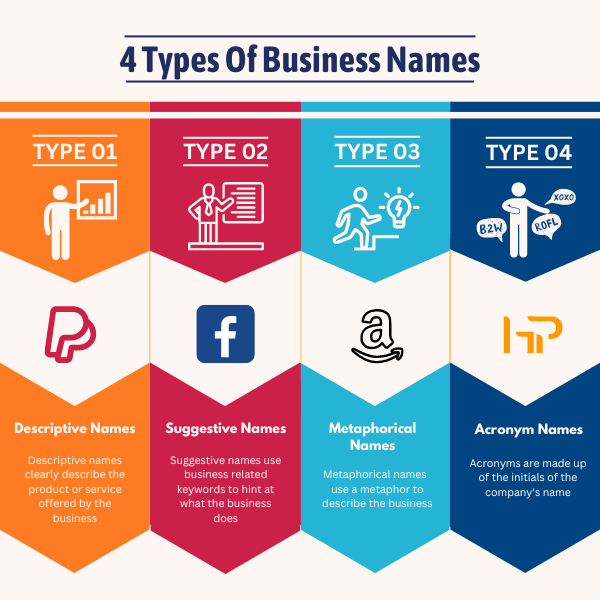Business name is a significant milestone, but it’s just the beginning of your entrepreneurial journey. Now that you have a name, it’s time to take the next steps to ensure that your business name can thrive.
Here’s what you should do next.
1. Research Availability
Before you get too attached to your chosen name, it’s crucial to ensure that it’s available for use. Start by conducting a thorough search to check if the name is already trademarked or in use by another business. You can search online trademark databases or hire a trademark attorney to assist you. It’s also wise to check domain name availability for your website and social media handles. Consistency across platforms is key to building brand recognition.
2. Register Your Business Name
Once you’ve confirmed that your chosen name is available, the next step is to officially register it. The process varies depending on your location and business structure. In the United States, for example, you’ll need to register your business name with the appropriate state agency. If you’re forming a corporation or LLC, you’ll also need to file additional paperwork. Be sure to research the requirements in your jurisdiction and follow the necessary steps to register your business name legally.

3. Secure the Domain Name
In today’s digital age, having a strong online presence is essential for any business. After confirming the availability of your chosen domain name, it’s wise to purchase it as soon as possible. Even if you’re not ready to launch your website immediately, securing the domain prevents others from acquiring it and helps establish your online identity. Consider purchasing variations of your domain name to protect your brand further.
4. Create a Logo and Visual Identity
Your business name is the foundation of your brand, but your visual identity plays a significant role in shaping how customers perceive your business. Work on creating a logo and other visual elements that reflect your brand’s personality and values. Whether you hire a professional designer or use DIY tools, aim for a cohesive look that resonates with your target audience.
5. Develop a Branding Strategy
Beyond a logo and visual elements, your branding encompasses everything from your tone of voice to your customer experience. Develop a comprehensive branding strategy that outlines how you’ll communicate with your audience, differentiate yourself from competitors, and build brand loyalty. Consistency is key across all touchpoints, from your website and social media profiles to your packaging and marketing materials.
6. Promote Your Business
With your business name, legal registration, and branding in place, it’s time to start promoting your venture. Leverage digital marketing channels such as social media, content marketing, and email campaigns to reach your target audience. Consider hosting a launch event or running special promotions to generate buzz around your new business. Remember to monitor the effectiveness of your marketing efforts and adjust your strategy as needed.

7. Protect Your Intellectual Property
As your business grows, protecting your intellectual property becomes increasingly important. Consider trademarking your business name, logo, and any other unique assets to prevent others from using them without permission. Regularly monitor for potential trademark infringements and take action to defend your intellectual property rights.
8. Secure Online Presence
- Social Media Handles: Try to snag usernames on major social media platforms that match your business name exactly.
- Website and Email: Set up your website and professional email addresses using your chosen domain name.

9. Engage with Your Audience
Building a strong relationship with your audience is key to sustaining your business. Utilize social media platforms and other communication channels to engage with your customers. Respond promptly to inquiries, address feedback, and actively seek input on your products or services. This interaction not only fosters customer loyalty but also provides valuable insights for business improvement.
10. Monitor Competitor Activity
Keep an eye on your competitors and their branding strategies. Analyze their messaging, visual identity, and marketing tactics to identify opportunities and stay ahead of industry trends. While it’s important to differentiate your brand, understanding competitor positioning can provide valuable insights for refining your own branding strategy.
11. Celebrate Milestones
Take the time to celebrate milestones and achievements along your entrepreneurial journey. Whether it’s reaching a certain number of customers, launching a new product, or expanding into new markets, acknowledge these accomplishments with your team and customers. Celebrating milestones not only boosts morale but also reinforces your brand’s credibility and success.
12. Seek Feedback and Iterate
Continuously seek feedback from customers, employees, and industry peers to gauge the effectiveness of your branding efforts. Use surveys, focus groups, and customer reviews to gather insights into how your brand is perceived and where improvements can be made. Iterate your branding strategy based on this feedback to ensure ongoing relevance and resonance.
13. Invest in brand-building
Building a strong brand is an ongoing process that requires investment of time, effort, and resources. Allocate the budget towards brand-building initiatives such as advertising, sponsorships, and community engagement activities. Remember that investing in your brand’s reputation and visibility is essential for long-term success and sustainability.
14. Stay True to Your Values
As your business grows and evolves, it’s important to stay true to your core values and brand identity. Your business name should reflect the values and principles that define your brand. Incorporate these values into your messaging and actions, demonstrating authenticity and integrity to your audience.
15. Adapt to Changing Trends
In today’s fast-paced business environment, staying adaptable is crucial for survival. Keep abreast of emerging trends in your industry and be willing to pivot your branding strategy as needed. Whether it’s embracing new technologies, responding to shifts in consumer behavior, or addressing societal changes, adaptability ensures that your brand remains relevant and resilient.
By following these steps, you can transform your chosen business name from a simple concept into a powerful brand asset that carries your company forward. Your name is the cornerstone of your brand identity, so invest the time and effort to ensure it sets you up for success.
Conclusion
In conclusion, coming up with a business name is just the beginning of your entrepreneurial journey. By taking the necessary steps to research, register, and protect your business name, you can set yourself up for success and build a strong foundation for your brand. With careful planning and execution, your business name can become synonymous with quality, trust, and success in the minds of your customers.
